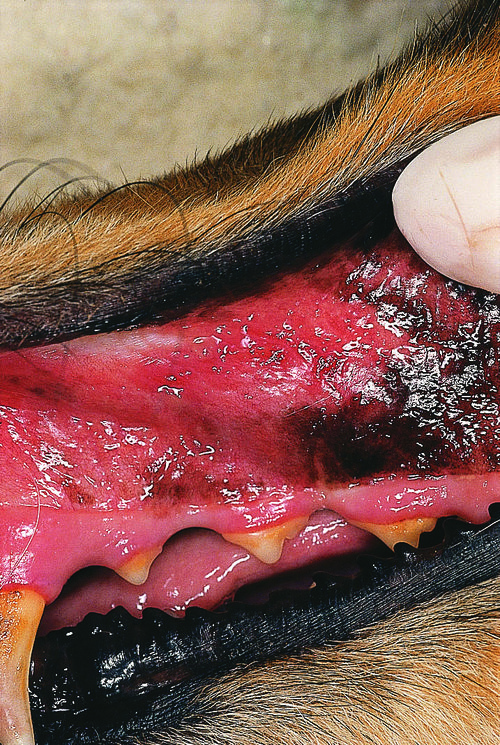Veterinary Dentistry Q&A 17
| This question was provided by Manson Publishing as part of the OVAL Project. See more Veterinary Dentistry Q&A. |
This ten-year old, spayed female Collie has a serum urea nitrogen of 70.3 mmol l–1 (99 mg dl–1) and creatinine of 885 mmol l–1 (10 mg dl–1).
| Question | Answer | Article | |
| What is the diagnosis? | Uremic stomatitis. The uremic patient also has signs of systemic disease. Clinical signs associated with uremia may include depression, lethargy, halitosis (‘uremic breath’), loss of appetite, weight loss, vomiting, diarrhea, and oral ulceration. Diagnostic evaluation of the uremic patient will indicate significant elevation of the serum creatinine, urea nitrogen, and phosphorus. Uremia may be secondary to postrenal disorders or renal failure (acute or chronic) with chronic renal failure the most common cause of ‘uremic stomatitis’. |
Link to Article | |
| What factors are responsible for the oral changes in this patient? |
|
Link to Article | |
| What treatment would be beneficial for this patient? | Treatment of the primary renal or postrenal problem causing the uremia should be the major focus. Decreasing the blood urea nitrogen level will decrease the urea in saliva and gingival crevicular fluid available for ammonia production. Topical or systemic treatment to decrease oral urease-producing bacteria will decrease ammonia production. Oral pain is a significant problem in some patients and the topical application of lidocaine gel or a sucralfate paste may help to alleviate the oral pain. |
Link to Article | |
